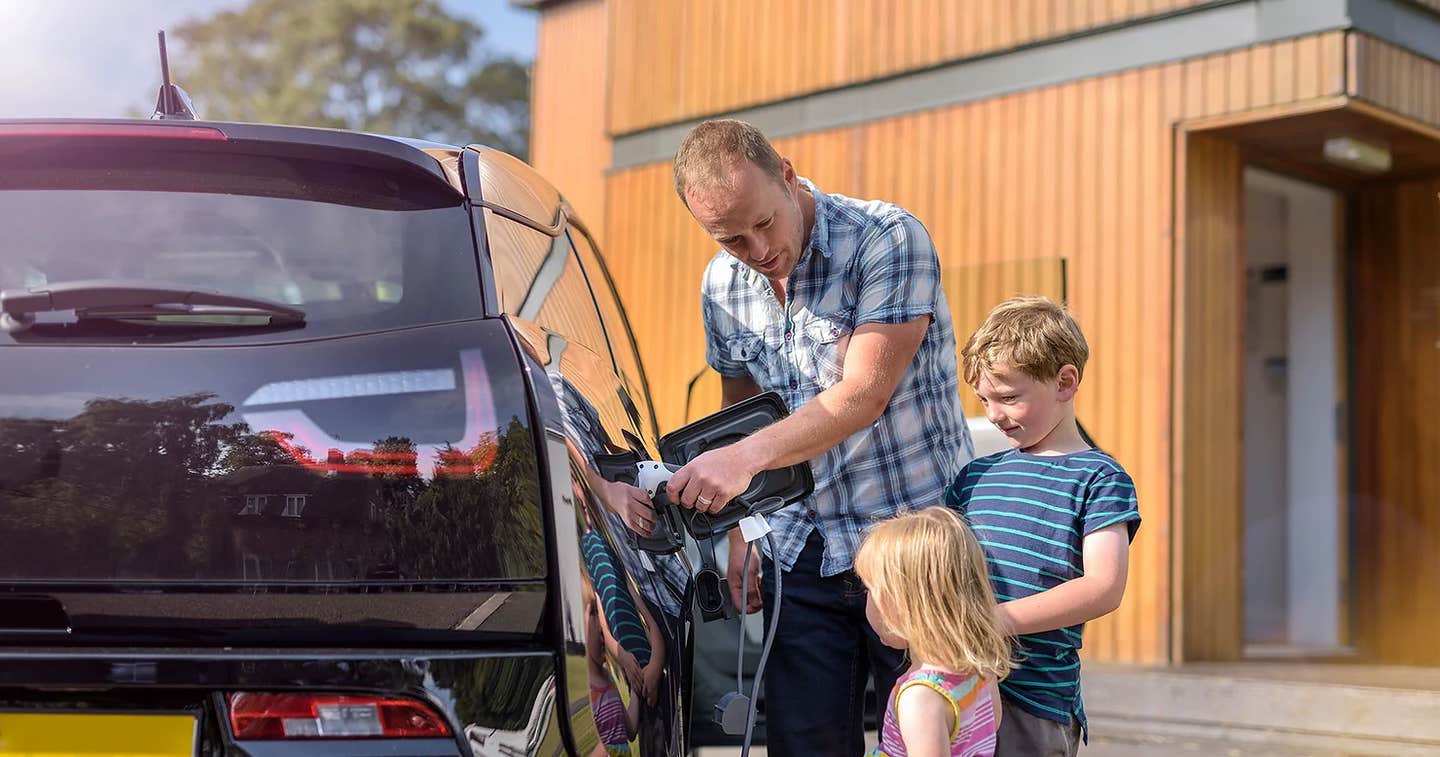Stanford researchers warn against charging electric vehicles at home overnight
Transportation remains a dominant source of global greenhouse gas emissions, and electrification is critical for decarbonizing this sector.

The vast majority of electric vehicle owners charge their cars at home in the evening or overnight. (CREDIT: CC BY-SA 4.0)
Transportation remains a dominant source of global greenhouse gas emissions, and electrification is critical for decarbonizing this sector. The global fleet of electric vehicles (EVs) is poised for explosive growth, projected to expand from 7 million today to over 400 million by 2040.
While this shift represents significant progress toward environmental sustainability, it introduces challenges for the electricity grid, requiring upgraded infrastructure, expanded capacity, and strategic planning to accommodate future charging demand.
By 2040, an estimated 300 million charging connectors will be required globally to meet EV demand. The availability and convenience of chargers—whether at home, workplaces, or public areas—play a pivotal role in drivers' decisions to switch to EVs.
Optimizing the placement of public charging stations has been a focus of research, but long-term solutions require accurate modeling of charging behaviors, including where, when, and how frequently drivers charge their vehicles.
Studies of driver behaviors highlight the complexity of these decisions, revealing a preference for charging at home or close to home, particularly overnight. While this habit offers convenience, it places undue stress on the electricity grid during peak demand periods.
According to a recent study published in Applied Energy by Stanford University, this trend must shift to ensure a sustainable future for EV adoption.
The study examined how EV growth in the western United States will impact the regional electric grid by 2035. If current trends persist, with the majority of charging occurring at home overnight, peak electricity demand could surge by up to 25%.
This increase would necessitate significant investments in new generation and storage capacity, likely involving natural gas—a counterproductive measure for decarbonization efforts.
Related Stories
In contrast, shifting charging to daytime hours, particularly during periods of abundant solar energy, could alleviate grid stress and reduce greenhouse gas emissions.
Ram Rajagopal, co-senior author of the study, emphasizes the need for policymakers to encourage daytime charging through utility rate adjustments and investments in workplace and public charging infrastructure.
“Policymakers should consider utility rates that encourage day charging and incentivize investment in charging infrastructure to shift drivers from home to work for charging,” Rajagopal stated.
The Role of Solar Energy and Infrastructure
California, a leader in renewable energy adoption, generates surplus solar energy during late mornings and early afternoons. Utilizing this surplus to charge EVs could minimize waste while reducing reliance on natural gas-fired power plants. However, achieving this shift requires rethinking electricity pricing and incentivizing employers to install workplace chargers.
Lead author Siobhan Powell noted the interconnected nature of the electric grid across western states, emphasizing that changes in EV charging habits in one state affect the entire region. “EV charging plus all other electricity uses have consequences for the whole Western region given the interconnected nature of our electric grid,” she said.
The study compared scenarios involving varying levels of charging infrastructure, time-of-use electricity rates, and commercial demand charges. It found that a strategy emphasizing daytime charging offered the greatest grid-level benefits, reducing the need for costly energy storage and generation expansion.
Implications for Grid Capacity and Policy
If EV adoption reaches 50% of vehicles in the Western U.S., current charging habits would necessitate 5.4 gigawatts of energy storage—the equivalent capacity of five large nuclear reactors. A shift to workplace charging could reduce this need to 4.2 gigawatts. However, building the necessary infrastructure requires significant time and investment.
California’s ambitious EV targets include banning gasoline-powered car sales by 2035 and achieving five million EVs on the road by 2030. Meeting these goals demands coordinated policy measures and investments to expand charging infrastructure while promoting behavioral changes among drivers.
Ines Azevedo, co-senior author and professor of energy science at Stanford University, stressed the urgency of these efforts. “We need to move quickly toward decarbonizing the transportation sector, which accounts for the bulk of emissions in California. This work provides insight on how to get there.”
Studies analyzing driver charging patterns offer valuable insights. Drivers often prefer shorter, more frequent charging sessions to maintain a high state of charge.
Socioeconomic factors also influence decisions, with some groups demonstrating distinct preferences for home or public charging. However, large-scale models of charging demand often oversimplify these behaviors, relying on deterministic or probabilistic assumptions that fail to capture the nuanced and diverse habits of EV owners.
Innovative approaches, such as session-centered clustering models, have revealed diverse driver behaviors in public charging settings, particularly in regions like the Netherlands. While promising, these methodologies have yet to be integrated into large-scale planning models, leaving a gap in accurately forecasting charging demand.
Building a Sustainable Future for EVs
Achieving a sustainable transition to electric mobility hinges on addressing both infrastructure and behavioral challenges. Encouraging daytime charging at workplaces and public stations requires overcoming barriers such as high commercial demand charges that disincentivize employers from installing chargers.
Policymakers must prioritize investments in charging infrastructure and develop utility rate structures that reflect the benefits of daytime charging.
A successful transition will not only ease the strain on the grid but also maximize the environmental benefits of renewable energy. By aligning EV charging habits with periods of abundant solar and wind energy, states can reduce reliance on carbon-intensive power sources and create a more resilient and sustainable energy system.
This coordinated effort between policymakers, utilities, employers, and consumers can pave the way for widespread EV adoption while minimizing costs and environmental impacts.
As Rajagopal and his colleagues conclude, the right strategies can ensure that the electrification of transportation serves as a cornerstone of global decarbonization efforts.
Note: Materials provided above by The Brighter Side of News. Content may be edited for style and length.
Like these kind of feel good stories? Get The Brighter Side of News' newsletter.
Joseph Shavit
Head Science News Writer | Communicating Innovation & Discovery
Based in Los Angeles, Joseph Shavit is an accomplished science journalist, head science news writer and co-founder at The Brighter Side of News, where he translates cutting-edge discoveries into compelling stories for a broad audience. With a strong background spanning science, business, product management, media leadership, and entrepreneurship, Joseph brings a unique perspective to science communication. His expertise allows him to uncover the intersection of technological advancements and market potential, shedding light on how groundbreaking research evolves into transformative products and industries.



